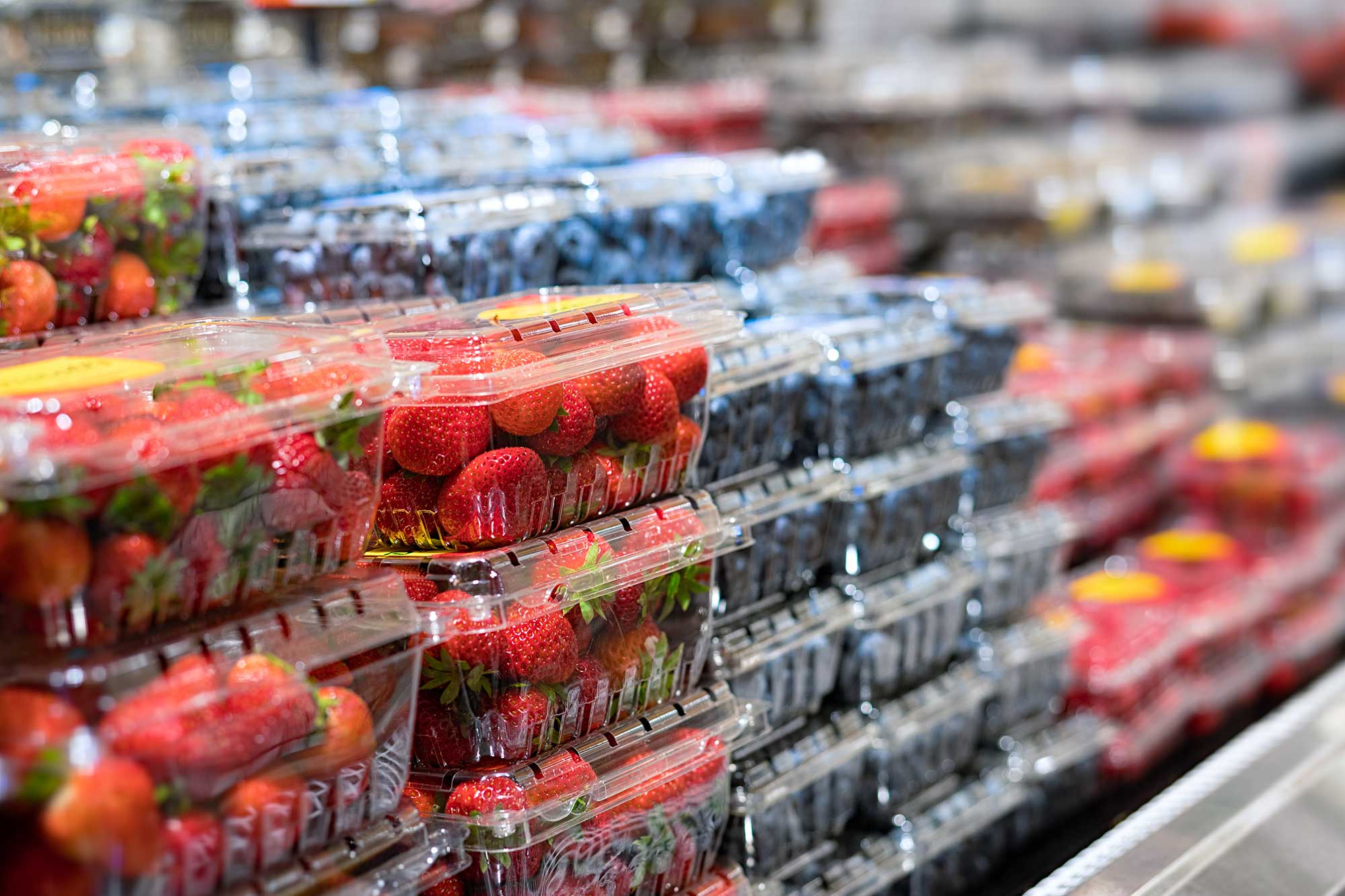With May comin’ ’round the bend, it feels like the right time to break out the rosé, start piling asparagus onto our plates, and top our breakfasts with fresh, juicy strawberries.
Springtime is indeed the sweet spot for these delights: They’re often cheaper, definitely tastier, and most-likely gentler on the planet. That’s all true if your market highlights locally grown seasonal produce. If not, think about glancing at the labels, since you might find all that yummy freshness made its way to you from California or Mexico. “That can’t be good,” you think, recalling something you heard about how eating local may help enhance the eco-consciousness of your diet.
But consider this: What you eat matters more than where your vittles come from. According to the go-to analysis of food systems in the journal Science, the bulk of food emissions trace back to production and land use, and only 6% from “food miles.” There is a small exception to this rule: Chow that travels by plane emits about 50 times the greenhouse gas emissions of food that goes by boat. Fortunately, only 0.16% of all food miles are logged in the air. The majority of grub—60%—travels by sea, with 31% coming by road, and about 10% by rail.
So now you’re probably really wondering about the origin of those fresh berries: Yes, unless you live in Mexico or Cali—or hit the farmers market during the blink-and-you’ll-miss-it season—they probably hopped a flight.
Curious what other fave foods are the most likely to spend time in the air, we turned to Deniz Berfin Karakoc, a Ph.D. candidate at the University of Illinois Urbana-Champaign whose dissertation is on agri-food transportation. “Probably potatoes and onions, and heartier fruits like bananas, are not going to be the ones that travel by air,” she says. “The berries, the lettuce, the ones that have high water content and are more perishable, the ones that don’t have a protective skin on them, are probably the ones that are being mainly transported by air.”
According to the U.S. Bureau of Transportation Statistics, produce is high on the list of imported foods that are flown in, but doesn’t top it. That dubious honor goes to meat and seafood, which account for 44% of all food imported by air into the U.S. In terms of domestic products, meat and seafood make up 48% of food that gets flown around the country, and prepared fresh and frozen foods account for 22%. (The latter is hard to pin down, because it could include anything from cheese curds to fresh juice.) Domestic produce, on the other hand, is mostly transported in refrigerated trucks.
The foods that are unlikely to ever get loaded onto a plane? Grains, along with imported shelf-stable goods like bottled Vietnamese fish sauce, and cans of Thai coconut milk and San Marzano tomatoes.
Though locavorism will never have the same impact as eating less meat or wasting less food, you could also try to avoid air-freighted foods as part of your planet-loving eating regimen. When you’re browsing the aisles, though, it can be hard to know precisely what has flown the friendly skies. Here’s a little advice if you want to try to dial back.
Tips to avoid flown food
As much as possible, avoid delicate and highly perishable fresh fruit and veg when they’re not in season. This could include, for instance, berries, cherries, lettuce, green beans, mangoes, and asparagus. Check packaging or those little stickers for their homeland.
Steer clear of meats and seafood boasting distant origins like Chile or Norway. (Or, ya know, maybe eat less meat in general.)
When dining out, eschew whatever the server at the restaurant tells you was “flown in fresh.” We’re looking at you, pillowy Italian burrata and sushi-grade fish winged in from Japan.
Decorate the dinner table with wildflowers and other local, seasonal blooms—daffodils and lilacs are delightful right now. Around 80% of cut flowers are imported, many arriving by air amid a cloud of pesticide.

